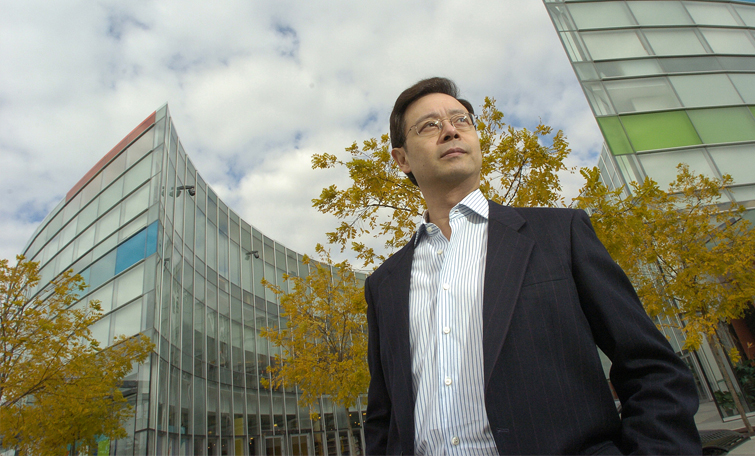Why China's Economy Is Entering a New Cycle of Growth
- Caifu Magazine | by CAIFU Magazine
- EN
While taking a taxi in Shanghai recently the driver asked me about whether the Chinese economy was in a new cycle or an old one. This exemplified the degree of the hot debate on whether the Chinese economy is going into a new cycle or not.

Xing Ziqiang, Chief Economist, Morgan Stanley China
I think, for the short-term prospect, as de-leveraging and overcapacity-cutting continue to manifest their effects; China’s gross domestic product (GDP) growth has passed its cyclical peak. But the long-term prospect shows the Chinese economy with more healthy and sustainable structural changes, which made us come to the conclusion that the economy had gone out of deflation, and the rate of leveraging rise would be under control. This would reduce financial risk and ensure China will reach high-income status ($13,000 USD per capita) within 10 years.
If we review economic trends in 2017, we will see three major differences in the current economy compared with the past five years – a different global environment (we’ve caught the express train synchronizing with global economy recovery); different bodies of consumers (with third- and fourth-tier cities driving major consumption); different investment recovery (capital expenditure from private enterprises for equipment update and technology development).
The synchronous recovery of the global economy is the most important factor that is easily overlooked by researchers in their analysis of China's economic recovery this current round. In the fourth quarter of 2016, my colleagues at Morgan Stanley's global economic research team stated that the global economy was having a synchronous recovery. This would be the first time in the past seven years when developed countries and newly emerging markets have gone hand in hand toward their respective economic comeback.
By now, the eurozone has finished its de-leveraging, and its economic data has been showing a more than 2 percent of seasonally adjusted annual growth rate for three consecutive quarters, with their main driving forces being domestic demand and private capital expenditure. As for the United States, the duration of their current round of economic expansion is the third longest one since World War II. Its economy is still in the late stage of a cycle, but core industries, such as real estate, have not significantly overheated. Taking the possible tax reform into consideration, this late cycle process will be extended.
On the other hand, new markets have begun to accelerate their growth after experiencing four to five years of adjustment, and their main driving force has turned from external demands to domestic ones. Overall, the synchronous recovery of global economy is setting more solid steps and will be followed by a rising cycle of capital expenditure, promoting global GDP growth rate back to above a long-term average level.
The synchronous recovery of the global economy will drive China's export demand. Exports are expected to rise from 2016’s 8 percent drop to a 9 percent increase in 2017, and a 7 percent increase in 2018. Net exports are expected to resume positive contributions to economic growth and increase the efficiency of manufacturing utilization and its profitability, reducing the reliance of economic growth on debt-driven public investments.
Since 2016, Chinese consumer spending has kept up its pace of improvement, with consumption far more than expected on real estate, automotive, high-end consumer goods, tourism, entertainment and the internet, mainly due to the release of consumption potential from third- and fourth-tier cities. In the first half of 2017, a study led by this author found that with the policy more loose on household registration, improved infrastructure, increasingly closer urban agglomeration and the integration of satellite city development, third- and fourth-tier cities are experiencing a consumption upgrading by a process of getting “larger, richer and bolder.”
First, third- and fourth-tier cities will become larger in size. Smaller cities have higher fertility rates, younger population structures, more flexible household registration policies, as well as relatively reasonable levels of living expenses, which will continue to provide strong support for their population growth.
Second, the income level of third- and fourth-tier cities is catching up and converging with second-tier cities. The lower-income level means higher marginal productivity and faster growth rates. In the past, different states in the United States and all EU countries have experienced income convergence. China's different cities not only meet convergence conditions, but also benefit from the government’s proactive initiative to balance regional development, such as expansion of an infrastructure network, public resource inclination disposition and development plans for three major regions announced this year, which aims to develop urban agglomerations and satellite cities. By 2030, this author anticipates the per capita income of residents in third- and fourth-tier cities will rise from today’s $4,500 USD to $8,300 USD, closing the income level gap between them and the first-tier cities from only half of the latter to one-third of it.
Lastly, residents in third- and fourth-tier cities will be more "daring to spend money." With more reasonable housing prices, higher savings rates, a flexible household registration system (and related social security and welfare), their marginal consumption tendencies are higher. Their consumption rates have bigger room for growth.
In addition to consumption of third- and fourth-tier cities, the recovery of inner energy for economic growth is also reflected in the improvement of private investment. The recovery of private investment in the current cycle since the end of 2016 – if looked at from an industry level – is mainly from the investment of middle and downstream manufacturing and service industries, and the upstream industries of overcapacity are still in depression. If looked at from the use of funds, main investments are in new equipment and technological transformation rather than in new/expansion of capacity. In addition to equipment upgrades, research and development (R&D) expenditure is also rising rapidly, costing more than 2 percent of GDP, and approaching the 3 percent level of leading R&D-advanced developed countries such as the United States, Japan and Germany. The accomplishment in R&D in China has a rather even distribution among the industries, with electronic communications, automation machinery, computer technology, measurement technology and pharmaceutical industry in the front ranks.
Unlike in the past, this rising cycle of new capital expenditures will not create overcapacity. Instead, it will promote industrial upgrading. In fact, China's share of the world's high value-added exports has doubled from 8 percent in the past decade, and a batch of world-class, self-owned enterprises have emerged, while the market share of the United States and Japan has steadily declined, reflecting China’s improvement of international competitiveness in manufacturing industries.
By catching the express train of the global economy’s synchronous recovery, coupled with three structural changes – the rise of consumption in third- and fourth-tier cities, the upgrading of equipment in private enterprise, and the strengthening development of technology research – China’s medium-and-long-term economy is expected to emerge from deflation. The rising rate of leveraging is expected to be under control and financial risk will be reduced, which will support my conclusion that in a decade, China will get its seat among the high-income countries.















